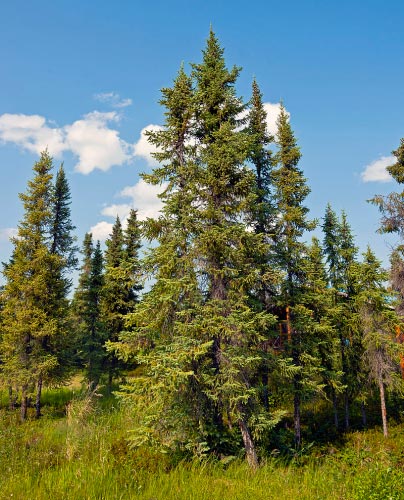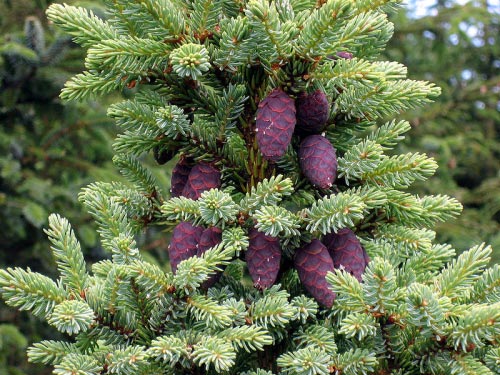
Photo credit to en.wikipedia.org
Given their ability to thrive in many soils (it helps that the tree can take root in everything from clays to bogs), it is easy to see why the Black Spruce is the most common tree found in Ontario. It is also able to grow in many different temperatures, such as cold wet climates or dry humid regions. This coniferous tree can be found from the Atlantic coast of the United States, west into Canada and all the way to the west coast of Alaska, giving shelter to many species of wildlife along the way.
The Black Spruce is monoecious, in other words, it has both male and female flowers on the same tree. The flowers shed pollen in late May to June, depending on the region they are in. Some trees are able to become cone-bearing as young as ten years of age. The main cone-bearing age, however is from 30 to 250 years old. They are most productive between 100 and 200 years of age.

Photo credit to en.wikipedia.org
Seeds mature about three months after pollination. Even though some seeds are produced yearly, heavy seed production occurs in intervals of every two to six years. Seeds are released over a period of years from the partially open cones. Trees rely heavily on the wind for spreading of the seeds. Black Spruce cones will open more rapidly should they be exposed to fire. Seedbeds can form in rich organic material left behind after a total burn off, helping ensure survival of the species after devastating forest fires. When raised on plantations, this species can grow anywhere from eight to twenty meters (or twenty-five to sixty-five feet) in height.
Just like any other living thing, the Black Spruce is not without enemies, above mentioned fire being just one. Destructive diseases, such as the Eastern Dwarf Mistletoe, a small leafless plant which is totally dependent on their host for survival, if left to spread, can fall from larger trees onto the saplings, leaving behind a wake of clumped branches and deform trees. This parasite can be controlled however through the use of a few different methods. Infected trees can be removed from areas and replaced with ones free of mistletoe, lightly infested trees may be left behind if you intend on harvesting them soon. Or chemicals can be used to protect uninfected spruce for a period of time.

Wind, ice and snow can also cause damage to both young and old trees. When storms occur you can rely on Dave Lund Tree Service in Bradford to help. Contact them at (905)884-0511 or toll free at 1-800-363-0511 for a free, no obligation estimate.

